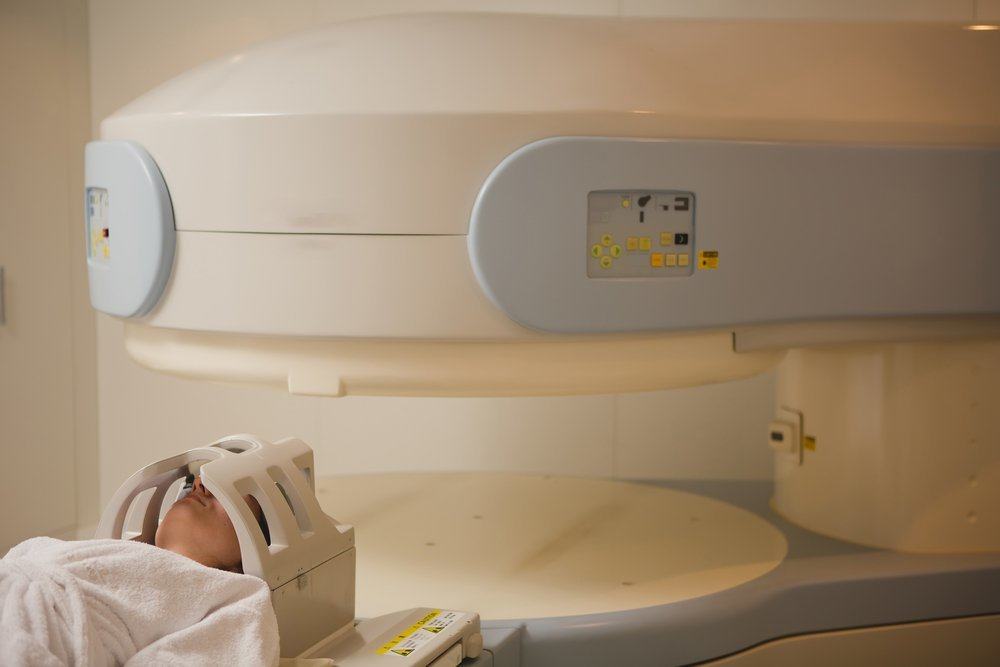Contents:
- Medical Video: Types of Brain Tumors
- Based on what types of brain tumors are differentiated?
- Types of brain tumors that often occur
- 1. Glioma brain tumor
- 2. Meningioma
- 3. Pituitary adenoma
- 4. Tumor neuroma
- 5. Central nervous system lymphoma
- 6. Craniopharyngioma
- 7. Pineal gland tumor
- 8. Metastatic brain tumors
Medical Video: Types of Brain Tumors
The brain is one of the organs in the human body that is very complex because it consists of various nerve cells to regulate every function of the body. Every part of the brain has its own role, so that the trauma in the head causes damage and different symptoms. This also applies to brain tumors that have a development of symptoms that vary, depending on which part of the nerve cells of the brain are affected by the tumor.
Based on what types of brain tumors are differentiated?
Brain tumors are a mass of cells formed by abnormal cells that occur in the brain, both those that grow naturally (primary) and the results of metastasis or the spread of cancer cells from other (secondary) organs. WHO classifies primary brain tumors based on the origin of tumor cells and the degree of tumor malignancy in the brain. Until now there are around 120 types of brain tumors that have been identified.
Most primary brain tumors occur in glial cells, a cell that connects nerve cells to the brain. Tumors in brain cells are known as gliomas. Brain tumors can also occur in other organs included in the nervous system, such as the pitutari gland (adenoma pitutari), brain membranes (meningioma), brain connecting cells (neuroma), as well as the sensory nerves and balance (acoustic neuroma).
While based on malignancy, brain tumors can be divided into benign and malignant. Benign brain tumors tend to develop slowly, do not spread to other parts of the brain and can not return to growth if treated with chemotherapy or radiotherapy completely. In contrast, malignant brain tumors can re-grow and spread rapidly, so surgical treatment with chemotherapy and radiology is needed.
Types of brain tumors that often occur
Although there are very many types, some types of brain tumors are more common than other types of brain tumors, these include:
1. Glioma brain tumor
This type of brain tumor occurs most often and has four levels of malignancy (grade). Glia cells are present in various parts of the brain, which is why gliomas have several main sub-types, namely:
- Astrocytoma -is a type of brain tumor that has varying severity. Most often found in children with low malignancy, but if it occurs in adults and the elderly have a higher malignancy. Grade IV astrocytoma or with the highest malignancy is also known as glioblastoma.
- Oligodendroglioma - brain tumors that usually occur in the front and periphery of the large brain, which interfere with the formation of a functioning myelin membrane in delivering impulses to nerve cells. Most are found in adulthood, but children can also experience it. Has an association with chromosomal abnormalities.
- Ependymoma -can come from parts of the brain that contain brain fluid in some parts of the spine. Found in adolescents and children with varying degrees of malignancy but can change. Ependymoma can spread to other parts of the central nervous system through circulation of brain fluid. Immediate removal is needed to avoid enlargement of the head due to fluid (hydrocephalus).
- Brain stem glioma - most cases occur in children under 10 years of age, but it is possible to occur in adults. This tumor attacks the lower part of the brain and can occur with low to high levels of malignancy.
- Optic nerve glioma - mostly found in infants but can also be experienced by adults. Marked by tumor growth around nerves that connect the eye to the brain. If not treated it can cause progressive blindness.
- Mixed Glioma -This type of glioma is not specific where it comes from and is a mixture of several types of gliomas with a high level of malignancy.
Symptoms of glioma brain tumors
Symptoms caused by glioma brain tumors include seizures, headaches, behavior changes, changes in cognitive abilities and / or have difficulty walking or paralysis.
2. Meningioma
Meningioma is a type of brain tumor that is more common in adults and female sex. This tumor attacks the lining of the brain in the cerebellum and cerebrum with malignancy but can increase. If it has become malignant in the third grade it can spread quickly and will be more difficult to remove without therapy and surgery.
Symptoms of meningioma brain tumor
Meningioma can cause symptoms of vomiting, seizures, visual disturbances and behavioral disorders, and the spread of tumors can occur to the face and spine.
3. Pituitary adenoma
Pituitary adenoma is a tumor that grows on the surface of the pitutary gland, a gland that plays a role in regulating the activity of the thyroid gland and sex hormones. This type of tumor is usually found in adults, and has a low level of malignancy.
Symptoms of pituitary adenoma
Symptoms depend on tumor activity which can increase the secretion of pitutari hormones or stop secretions. Patients with tumors usually experience headaches and visual disturbances caused by pressure from tumors, nausea and vomiting, cognitive changes, stopping menstruation, abnormal hair appearing in women, discharge from the breasts, impotence in men, and weight gain and hand growth and unnatural feet.
4. Tumor neuroma
Also known as schwannoma which includes a neuroma in connecting cells such as the spine or the senses (acoustic neuroma). Tumors can originate from nerve fiber protectors, both inside the skull and in the spine. Although growth is slow and tends not to spread, this type of tumor can grow back without surgery.
Symptoms of neuroma tumors
These tumors cause nerve disorders that are affected by the tumor, so that patients experience impaired sensory function or balance disorders.
5. Central nervous system lymphoma
Tumors that occur in the lymphatic system consisting of lymph nodes. The lymphatic role is to produce lymphocyte fluid as a defense against disease and infection. This type of tumor is very malignant, the type of tumor is a sign of growth of other tumors in the brain. It usually occurs in the elderly and is more experienced by men.
Symptoms of central nerve lymphoma
Symptoms include paralysis, visual disturbances, seizures, and behavioral disorders.
6. Craniopharyngioma
Occurs in the area of the brain adjacent to the eye or around the lower part of the brain that is adjacent to the pitutari gland. It is common in children and the elderly and is found with low malignancy.
Symptoms of craniopharyngioma
Symptoms such as vision problems, headaches and growth disorders in children.
7. Pineal gland tumor
More experienced by children and adolescents. This type of tumor begins in the pineal gland which is adjacent to the center of the brain with varying degrees of malignancy. Malignant tumors have the potential to spread to the spine and interfere with the secretion of the hormone melatonin which regulates the cycle of wakefulness and sleep.
Symptoms of pineal gland tumor
The main symptoms are fatigue, headache, weakness, difficulty remembering, and potentially causing hydrocephalus.
8. Metastatic brain tumors
Experienced by elderly who have cancer. These tumors originate from primary cancers originating from other body parts, especially the lungs, breast, colon, kidney, or skin. Most of the spread can attack the cerebrum but also has the potential to attack the cerebellum and brain stem.
Symptoms of metastatic brain tumors
Complaints such as headaches, seizures and decreased coordination can be experienced by sufferers.












